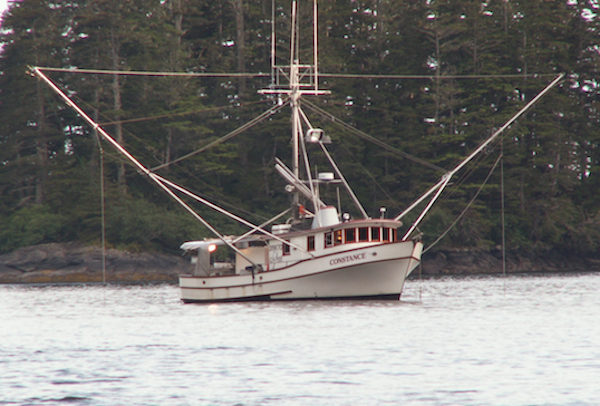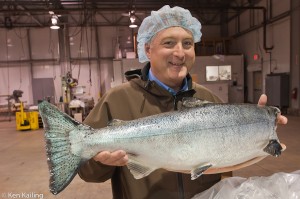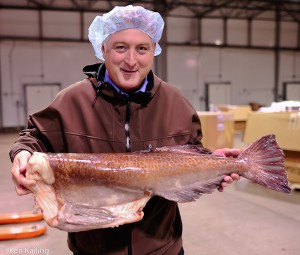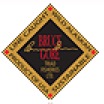 Even perfect fish don’t easily get from boat to table. While fishermen like Krist Martinsen, captain of the Fishing Vessel Constance out of Sitka Alaska, take special care to treat the fish they catch respectfully and prepare them carefully for delivery to retailers and restaurateurs (read Catching the Perfect Fish), there are more stops along the supply chain.
Even perfect fish don’t easily get from boat to table. While fishermen like Krist Martinsen, captain of the Fishing Vessel Constance out of Sitka Alaska, take special care to treat the fish they catch respectfully and prepare them carefully for delivery to retailers and restaurateurs (read Catching the Perfect Fish), there are more stops along the supply chain.
Mark Tupper, Triad Fisheries, does business the old-fashioned way: “I pay the fishermen as I sell the fish. Business is done with honor and with a handshake.” The fishermen are independent agents that fish for a brand. While no money is exchanged up front, Tupper is responsible to get the best price possible for the catch.
 Triad Fisheries offers a premium-priced specialty fish – sashimi-grade salmon – sold under the Bruce Gore Frozen-at-Sea brand. The 17 full-time boats Tupper represents have a different mindset; they treat the fish as food rather than as dollar bills. “We pay homage to the product rather than massively killing fish every day,” says Mark.
Triad Fisheries offers a premium-priced specialty fish – sashimi-grade salmon – sold under the Bruce Gore Frozen-at-Sea brand. The 17 full-time boats Tupper represents have a different mindset; they treat the fish as food rather than as dollar bills. “We pay homage to the product rather than massively killing fish every day,” says Mark.
Consider the difference in the handling processes. Fishermen who are gill or seine netting harvest large quantities of fish as fast as possible. A gill-netter might catch 30,000 pounds of fish a day and those fish are packed in ice to be delivered to the dock within 5 to 8 days.
Mark’s fishermen stay out at sea weeks at a time returning when their freezers are full. And that delivery is consists of 15,000 to 20,000 pounds of fish for the entire trip – up to 6 weeks – not a single day. Clearly they look for quality NOT quantity!
(Take a look inside Triad Fisheries processing plant here.)
Stopping the Biological Clock

To qualify as a Bruce Gore fisherman, there are stringent requirements. By putting a “super freezer” – which brings the core temperature of the fish down to -30 degrees – the preparation process “stops the biological clock.” Fish are prepared so quickly that they are frozen “pre-rigor” and actually go through rigor mortis after they are thawed.
The process begins with trolling. When a fish is caught in a gill net or a seine it goes into stress as it starts to suffocate. That stress causes the fish to build up lactic acid in its muscles, just like humans do under stress. Triad’s fisherman troll at 2-3 knots, the same speed that the fish are moving in the water. When the fish bites, the line is brought to the back of the boat slowly. You won’t see fishermen pulling in leaping fighting fish like in the “Bass Pro” TV series!

To prevent any degradation that might take place in the freezer, the fish must be bloodless when frozen. Each fish is brought to the side of the boat and stunned to prevent it from flopping on the deck and bruising. Then a cut is made through the gills to drain the blood, the head is cut off, and the fish is eviscerated. In a time consuming step, the remaining blood is removed under pressure. The end result? A very clean fish with no chance for bacterial contamination.
In preparation for freezing, each fish is carefully arranged with the belly open and the tail spread completely flat. Once frozen, the fish are dipped in salt water to create a glaze that prevents air from reaching the meat.
As a further step to maintain cleanliness, each time 20 fish have been processed, the decks are cleaned and sanitized. That means the decks are cleaned over and over every day.
It’s not an easy processing method and many fishermen can’t – or won’t – take the time required. Yet, “You could line up fish from each of the 17 full-time boats we represent and all the fish will look exactly the same,” says Tupper, “regardless of who caught them.”
(Video source: Triad Fisheries)
Fish Around the World
Where does all this perfect fish go? Triad Fisheries sells to customers around the world, some of whom have been buying fish for the last 20 years. Those customers prepare “pre-order” contracts for quantities of fish at certain sizes, months before the fishermen go out to sea.
About one-third of the fish goes to Europe, to distributors or wholesalers that sell to retailers and restaurants or to processors who are smoking the fish or making other products. For example, in Germany one group sells a single perfect King salmon in a box, one at a time to chefs that do their own cutting and preparation.
Another third goes to Japan to the Tsukiji Market – a wholesale fish market in Tokyo – where an old established Japanese family sells Triad fish to high-end retailers in the Tokyo area and to top-tier restaurants offering the salmon as wild sashimi.
“I believe our salmon is the highest grade wild sashimi left in the world,” says Mark. “Last year I replicated a test Bruce Gore did in the 80s to measure bacteria present on the fish. Surefish, an independent testing lab in Seattle, took three fish from our cold storage facility and tested them daily for the presence of bacteria. The fish was kept 8 days on ice before trace amounts of bacteria were collected. I don’t think anyone else in the industry can say that.”
The final third stays in the U.S. where Triad sells to wholesalers, retailers, restaurants, and food processors. Ordinarily the fish are sold whole, however some is processed for smaller restaurant groups without the kitchen space – or skill – to do their own. The fish are split or filleted, vacuum packed, and delivered.
Coming Up
GoodFood World will continue to follow the fish supply chain in future segments featuring Chris King, seafood purchasing expert for 6 Town and Country/Central Markets in Puget Sound; Peter Birk, executive chef at Ray’s Boathouse in Seattle; and Dominique Place, Gerard & Dominique (G&D) Smoked Salmon, processor of lox-style smoked salmon, Woodinville WA.

